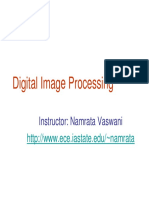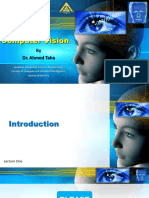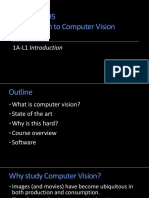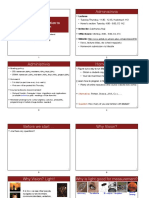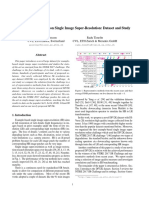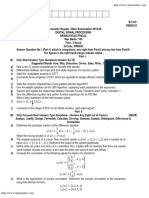0% found this document useful (0 votes)
12 views58 pagesCOMP3411 Week 7 - Computer Vision
The document provides an overview of computer vision, covering topics such as image processing, scene analysis, and cognitive vision. It discusses the challenges machines face in interpreting visual information, the techniques used for image processing, and the interaction between vision and reasoning in cognitive vision. Additionally, it highlights applications of computer vision in various fields, including robotics and object recognition.
Uploaded by
tianzong LiCopyright
© © All Rights Reserved
We take content rights seriously. If you suspect this is your content, claim it here.
Available Formats
Download as PDF, TXT or read online on Scribd
0% found this document useful (0 votes)
12 views58 pagesCOMP3411 Week 7 - Computer Vision
The document provides an overview of computer vision, covering topics such as image processing, scene analysis, and cognitive vision. It discusses the challenges machines face in interpreting visual information, the techniques used for image processing, and the interaction between vision and reasoning in cognitive vision. Additionally, it highlights applications of computer vision in various fields, including robotics and object recognition.
Uploaded by
tianzong LiCopyright
© © All Rights Reserved
We take content rights seriously. If you suspect this is your content, claim it here.
Available Formats
Download as PDF, TXT or read online on Scribd
/ 58
































